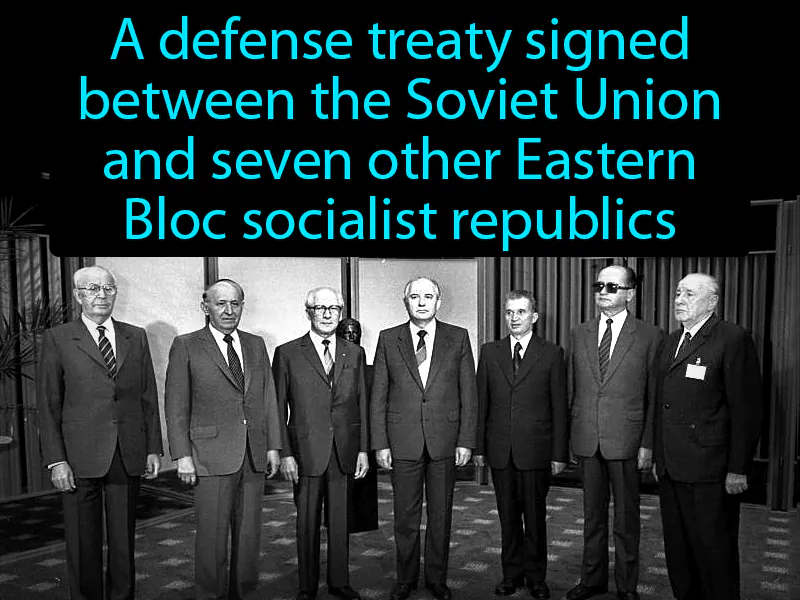Warsaw Pact
Warsaw Pact: Easy to understand
The Warsaw Pact, created in 1955, was a significant event during the Cold War as it solidified the divide between the Eastern Bloc, led by the Soviet Union, and the Western countries in NATO. This alliance highlighted the intense rivalry and distrust between the communist and capitalist nations, emphasizing the global struggle for power and influence. The tensions from this period still matter today, as they shaped modern geopolitics and contributed to ongoing mistrust between Russia and Western countries. For an average person, the legacy of the Warsaw Pact influences international relations, such as NATO's current role in global security and its impact on national defense policies. Understanding this historical context helps people appreciate why certain countries have specific alliances and how these relationships affect global peace and security.

Practice Version

Warsaw Pact: A defense treaty signed between the Soviet Union and seven other Eastern Bloc socialist republics. Warsaw Pact. The Warsaw Pact was a military alliance formed in 1955 to counter the NATO alliance during the Cold War.